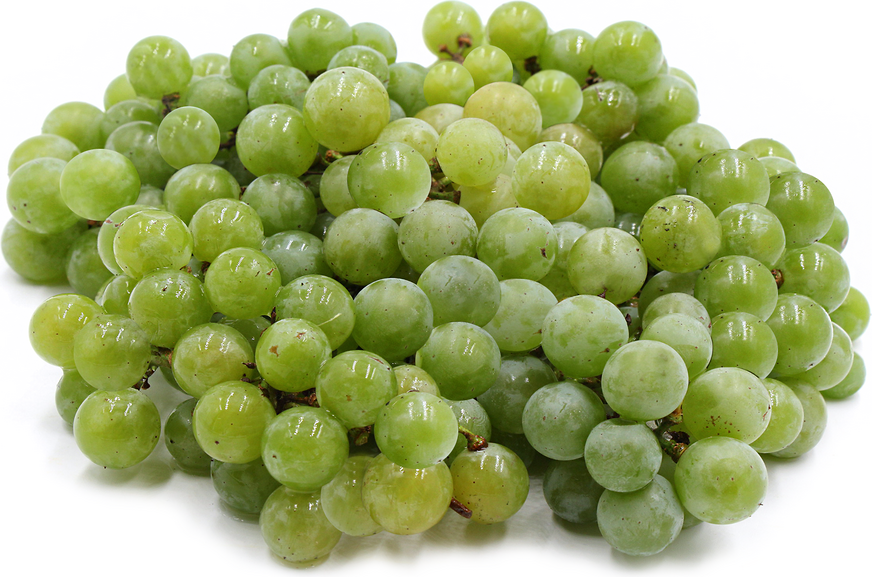


Niagara Grapes
Estimated Inventory, lb : 0
Description/Taste
Niagara grapes are medium to large in size and are globose in shape, growing in large clusters. The smooth, glossy skin is firm and can range in color from light green to a pale, yellow-green. The skin also develops a thin bloom or film that helps protect the grape from moisture loss. The translucent, green flesh is juicy and seedless. Niagara grapes are crisp and sweet with a very grapey or foxy flavor, which can best be described as slightly musty or tannic.
Seasons/Availability
Niagara grapes are available late summer through early fall.
Current Facts
Niagara grapes, botanically classified as Vitis labrusca ‘Niagara,’ are an American heirloom variety that grows on woody, tendril-climbing vines that can reach up to twenty feet in length. Niagara grapes are considered a white or green variety and are the leading green grape variety grown in the United States. These grapes are a cross between the well-known concord grape and the lesser-known cassady grape and are most widely recognized as the variety used in white grape juice.
Nutritional Value
Niagara grapes are an excellent source of vitamins C, K, B1 and B6, as well as minerals like potassium and manganese. They are also rich in flavonoids, which are important phytonutrients with antioxidants that benefit the immune system and polyphenols which are concentrated in the grape skin and act as additional antioxidants for the body.
Applications
Niagara grapes are best suited for both fresh consumption and cooked applications such as baking. They are most commonly eaten fresh, out-of-hand as a table grape or as a healthy snack. Niagara grapes can be sliced and added to fruit salads or baked into tarts. They can also be made into jams or jellies. Niagara grapes are known for their aromatic and flavorful juice, which can be extracted through pressing or using a juicer, and they can also be made into sweet, homemade wine. Niagara grapes pair well with cheeses such as cheddar or feta, citrus, and chocolate. They will keep up to ten days when wrapped loosely in plastic and stored in the refrigerator.
Ethnic/Cultural Info
Niagara grapes are named for Niagara County of New York, where the grapes were originally produced. The grape was first introduced by the Niagara Grape Company, one of the many companies located in the Concord Grape Belt, which is the oldest region for grape growing in the United States. Niagara grapes are now produced across the United States where they are used for both sparkling and still white grape juices.
Geography/History
Niagara grapes are the product of two New York botanists, C. L Hoag and B. W. Clark. They created the Niagara variety in 1868 from the deliberate cross of a concord grape and a cassady grape. The grapes were first commercially sold in 1882 and appeared in the American Pomological Society’s 1885 fruit catalog. Niagara grapes are not ideal for shipping and are most often found near where they are grown. They can be found at specialty markets in the United States, Canada, Brazil, and New Zealand
Recipe Ideas
Recipes that include Niagara Grapes. One
| What Julia Ate |
|
Niagara Grape Jelly |
| WNYC |
|
Braised Chicken Thighs with Niagara Grapes, Shallots and Thyme |
| Lindy's Toast |
|
Niagara Jelly |




